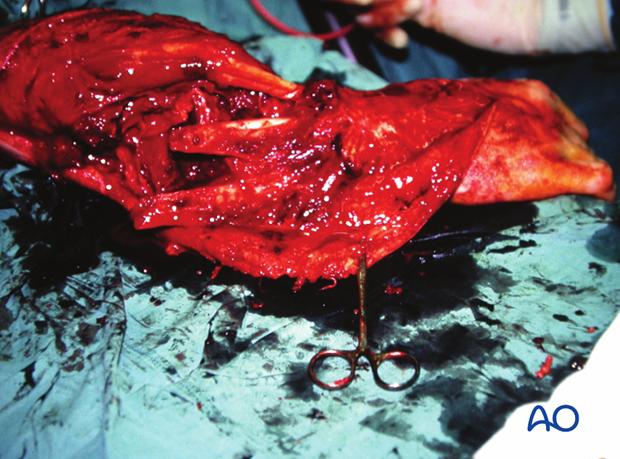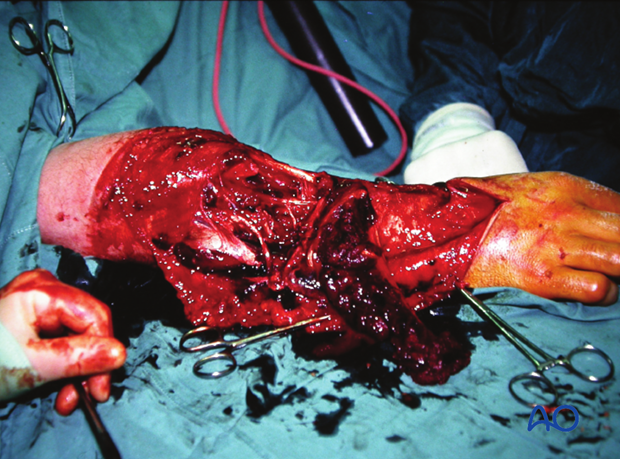Intramedullary nailing
1. Principles
Indications
Intramedullary nailing of fractures of the shafts of the adult radius and/or ulna is rarely indicated and the role of intramedullary nailing is still to be defined. Rotational stability has long been a factor against the use of nails in adult forearm shaft fractures, although several locking options currently are proposed and may lead to a wider use in adult forearm fractures in the future.
The radius and ulna, in concert with the proximal and distal radio-ulnar joints, constitute a complex articulation, which permits supination and pronation of the forearm. As with all articular injuries, restoration of the exact skeletal morphology is essential as a platform for full functional recovery.
In the skeletally immature, there is some residual capacity for remodeling, especially in the very young, and approximate morphological restoration can be acceptable, in certain circumstances. For this reason, flexible intramedullary nailing of pediatric forearm shaft fractures is widely accepted.
In the adult, intramedullary nailing of forearm shaft fractures is only acceptable when the injury is such that anatomical reduction and plate osteosynthesis are strongly contraindicated. Such circumstances include crushing injury of the forearm with major soft-tissue mutilation (as in the illustrated case), the presence of extensive burns, and multiple skeletal injuries presenting a major pathophysiological challenge.
This clinical image shows a major crush injury of the forearm with multifragmentary fractures of both bones.

The same case after surgical debridement and before intramedullary nailing of both bones.

Early healing after split–skin grafting. The patient went on to bony union but there was considerable functional compromise related to the extreme severity of the soft-tissue injury.

Additional relative indications
Further relative indications may be:
- Certain segmental fractures
- Gunshot fractures with severe comminution
- Refractures of the ulna after plate removal
See: A Hofmann, MH Hessmann, L Rudig (2004) Intramedullary osteosynthesis of the ulna in revision surgery. [Article in German] 107(7):583-92 - Pathological fractures
Limitations and contraindications
- Fractures occurring less than 3 cm from the proximal or distal end of the bone
- Canal diameter smaller than 3 mm
- Preexisting forearm deformity
- Active infection
For a detailed description of forearm intramedullary nailing technique consult fragmentary segmental both bone fractures.













